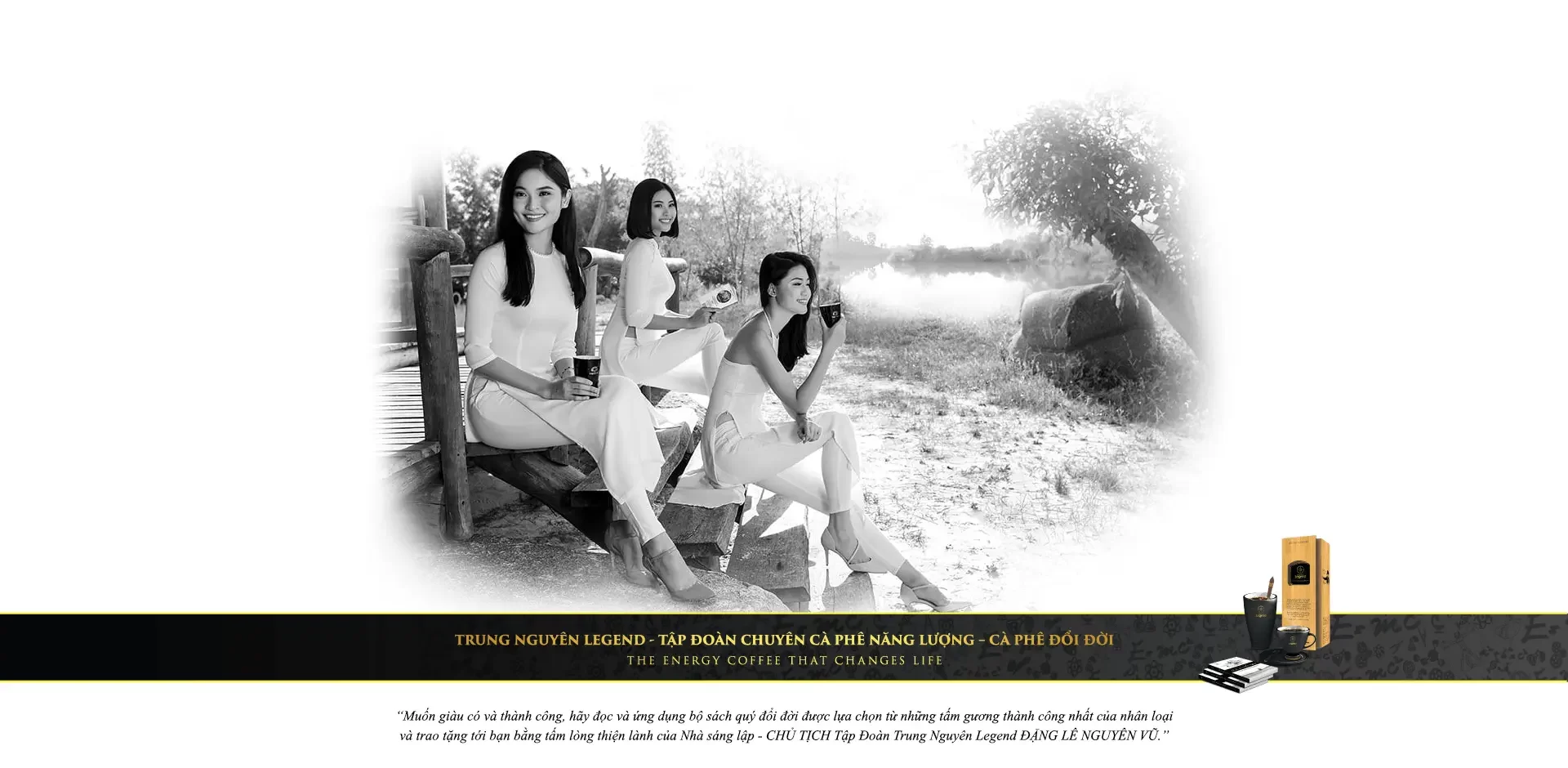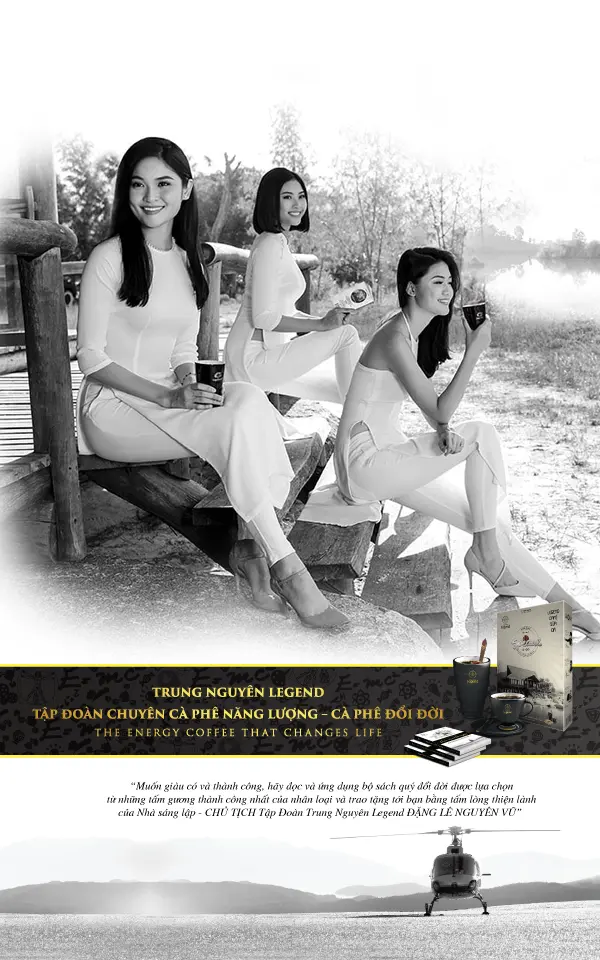Article 102: The mark of coffee in the historical development of music
In the historical development of music worldwide, coffee and coffee houses have contributed to stimulating the creativity and elevation of composers, performing artists, and bringing music to new heights.
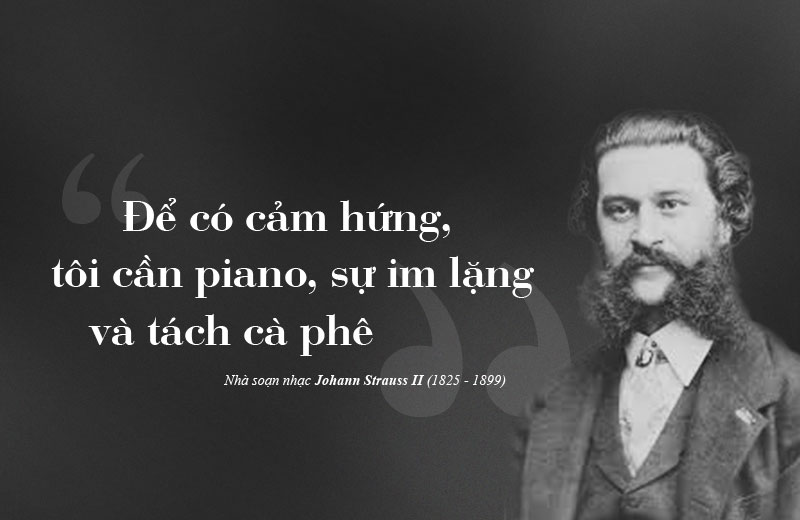
For inspiration, I need a piano, silence, and a cup of coffee. – Composer Johann Strauss II (1825-1899)
Music – The Voice of Aspirations for Happiness
Ancient music originated and was transmitted through the oral traditions of civilizations such as Sumer, Egypt, Mesopotamia, Greece, and Rome, as an essential part of civic, religious, and court life. In social systems based on slavery and containing many contradictions and struggles, music divided into two directions. One was the music of the majority of the people, with songs reflecting the realities of production, labor, war, and resistance against oppression and injustice. The other was music expressing reverence for nobility, royalty, with a formal, grandiose, and conventional character.
Ancient music also stood out for its role in religious rituals, being considered an important part of ceremonies, in the praise of deities, and in enhancing communication with the divine. Particularly, with the emergence of early philosophy, philosophers used music as a subject to educate people on noble morals and a heroic spirit.
By the 14th century, the standardization of musical notation combined with the development of printing technology allowed music to be shared across borders. The profound changes in political, economic, and social life during this period also powerfully impacted cultural and artistic life, driving the development of many new schools and styles. Considered one of the 7 fine arts of humanity, music continuously innovated, integrating with the evolution of artistic movements like the Renaissance, Baroque, Classical, and Romantic, in pursuit of the aspiration for a better life.
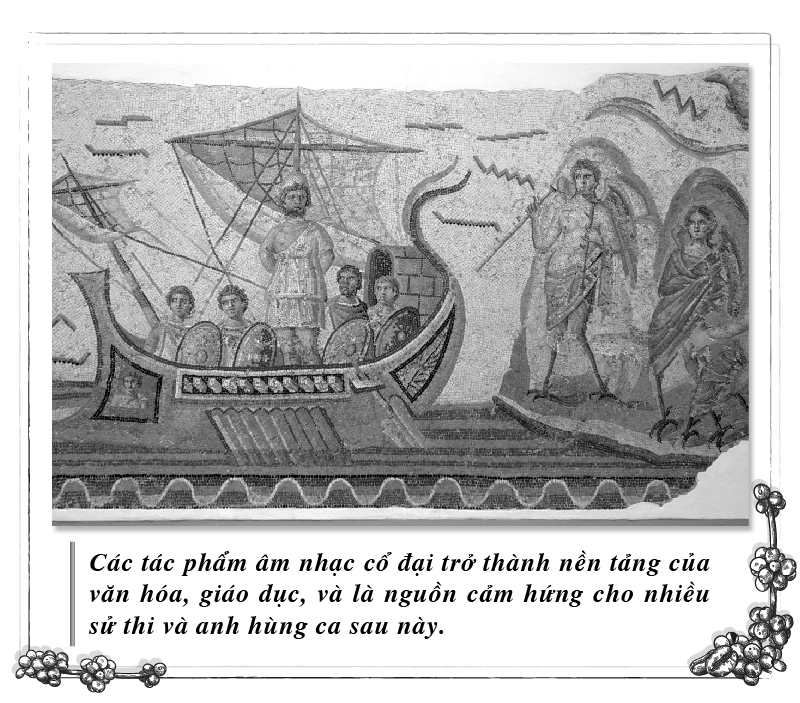
The works of ancient music have become the foundation of culture, education, and a source of inspiration for many epic poems and heroic ballads that came later.
The 17th century saw a powerful transformation in European society, emphasizing the strength of human knowledge and creative spirit. Influenced by the spirit of the age, the Baroque artistic style developed and dominated the arts in Europe, extending beyond just painting to sculpture, music, architecture, and literature.
The Baroque style, with its “exaggerated lighting, intense emotions, and freedom from restraint,” elevated the role of the individual performing artist, driving creativity and the development of diverse musical genres. Composers and performers continuously strived for innovation, pioneering new musical forms such as opera, cantata, oratorio, concerto, and sonata, as well as employing complex techniques and developing new instrumental playing methods. Notably, the emergence of opera, a comprehensive art form that combined music, scenery, and performance with a clear narrative, established a supreme musical expression that dominated the world of music for centuries. The relentless creativity of Baroque composers such as Johann Sebastian Bach (1685-1750), Frideric Handel (1685-1759), and Antonio Lucio Vivaldi (1678-1741) helped raise the status of music to be on par with language, becoming a tool for expression and communication.
The 18th century was the age of reason, where European society was awakened by progressive ideas about individual freedom and the pursuit of a happy, beautiful life. This period also saw the birth of the Classical artistic school, which aimed for the clarity of thought and the ideals of beauty, as well as balance and harmony in composition. Classical music incorporated the individual’s emotions, imbued with a spirit of overflowing energy, love, and optimism, stirring the emotions of the listener. Composers such as Franz Joseph Haydn (1732-1809), Wolfgang Amadeus Mozart (1756-1791), and Ludwig van Beethoven (1770-1827) were iconic figures of this era, contributing a vast body of seminal symphonic, concerto, and sonata works that are considered timeless masterpieces.
At the beginning of the 19th century, the development of political independence movements around the world stimulated the growth of nationalism in music. By incorporating elements of national music or national themes into various musical genres, composers conveyed stories imbued with patriotism and unity, creating the distinctive characteristics of homeland music. Examples include the works of Frédéric Chopin (1810-1849) reflecting the sound of Polish music, the compositions of Franz Liszt (1811-1886) expressing the Hungarian identity, and Richard Wagner’s (1813-1883) operas evoking German pride. Particularly, when the civil rights movement emerged, music played a role in building empathy to help people overcome division and contribute to the end of discrimination in society.
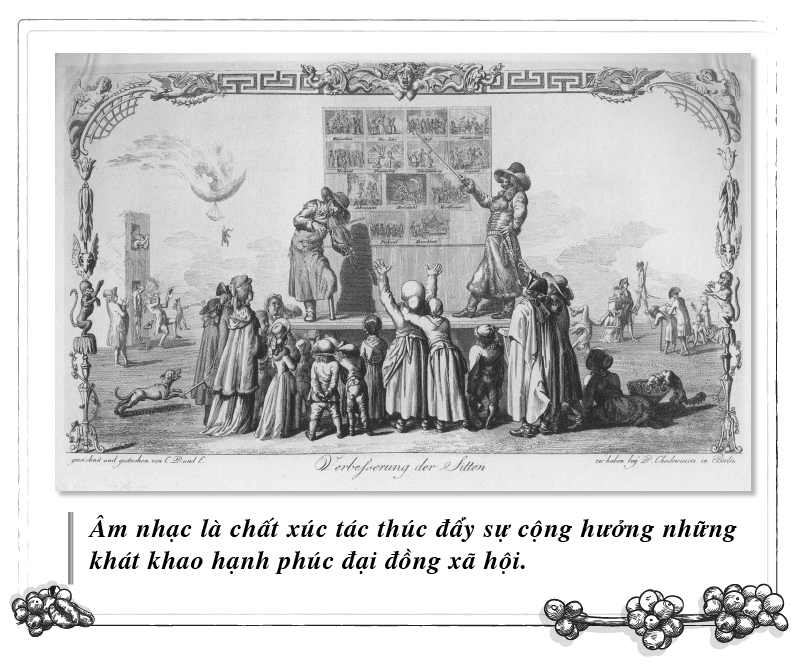
Music is a catalyst that drives the resonance of the universal aspiration for social harmony and happiness.
Coffee and coffee shops in the historical development of music
Appearing and rapidly developing in Europe from the 17th century, coffee was seen as a stimulant that encouraged creative thinking and was beloved by the philosophers and intellectuals of the Enlightenment era. In the field of music, coffee became an almost indispensable source of energy and inspiration for great composers.
Wolfgang Amadeus Mozart (1756-1791), one of the most famous classical composers, had a habit of drinking black coffee. For Ludwig van Beethoven (1770-1827), the ritual of drinking coffee became a standard part of his life. Every day, he would precisely select 60 coffee beans, personally carry out the brewing process, and savor the coffee as a special ceremony. As for Johann Sebastian Bach (1685-1750), the residents of the city of Leipzig where he lived all knew of his weekly habit of visiting the local coffee houses.
Expressing his particular fondness for coffee, Johann Sebastian Bach composed the work Coffee Cantata. Composer Franz Joseph Haydn also created the piece The Coffee Party; American musician Peggy Lee (1920-2002) wrote Black Coffee; and American singer-songwriter Bob Dylan (1941), an important figure in popular culture, penned One More Cup of Coffee.
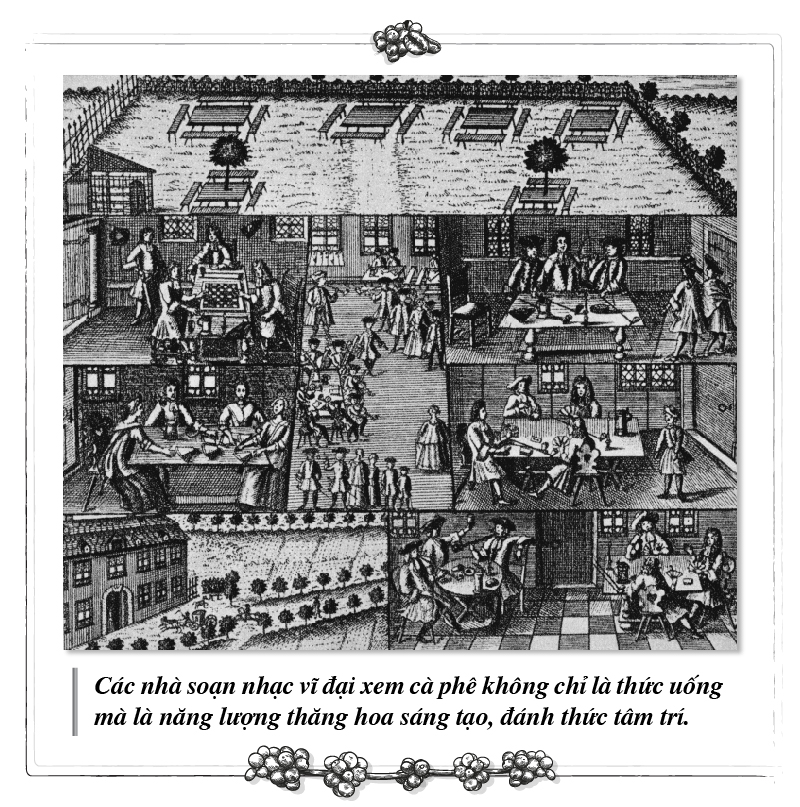
Great composers viewed coffee not just as a beverage, but as a creative elixir that energizes and awakens the mind.
Along with coffee, coffee houses also played an important role in the development of music. Coffee houses were spaces that introduced, performed, and brought music to the wider public, becoming an important part of cultural life. They also provided a source of inspiration for composers to create their masterpieces.
Originating first in Istanbul, coffee houses at the time were the center for the performance of traditional Ottoman folk music (Âşıklık) and other theatrical art forms. When they arrived in Europe in the 17th century, coffee houses served as “connecting points” – open, friendly places suitable for organizing musical performances. From there, they satisfied the creative passions of musicians and artists, nurturing new talents and new styles, as well as bringing together the community of music lovers.
The Zimmermann Café in Leipzig was the venue for concerts and music theory discussions by the Collegium Musicum orchestra. From this place, the Collegium Musicum created an entirely new musical style, bringing late Baroque music to its pinnacle. In 18th century Vienna, the coffee house concert hall became popular, with examples like Café Jüngling, Zweites Kaffeehaus, and Erstes Kaffeehaus. Within the coffee house space, renowned musical works were performed and shared widely. Wolfgang Amadeus Mozart gave musical performances in Café Frauenhuber and Café Bellevue. The Austrian composer Johann Strauss II (1825-1899), known as the “Waltz King”, also performed at Café Dommayer.
In the United States in the 1950s, coffee houses in Greenwich Village became a meeting point for artists and audiences from different races and classes, encouraging an unprecedented level of integration and mingling. In coffee houses like Cafe Wha? and Gaslight Café, renowned singers such as Fred Neil (1936-2001), Bob Dylan (1941), and Paul Simon (1941) performed, allowing audiences to experience radically different types of music.
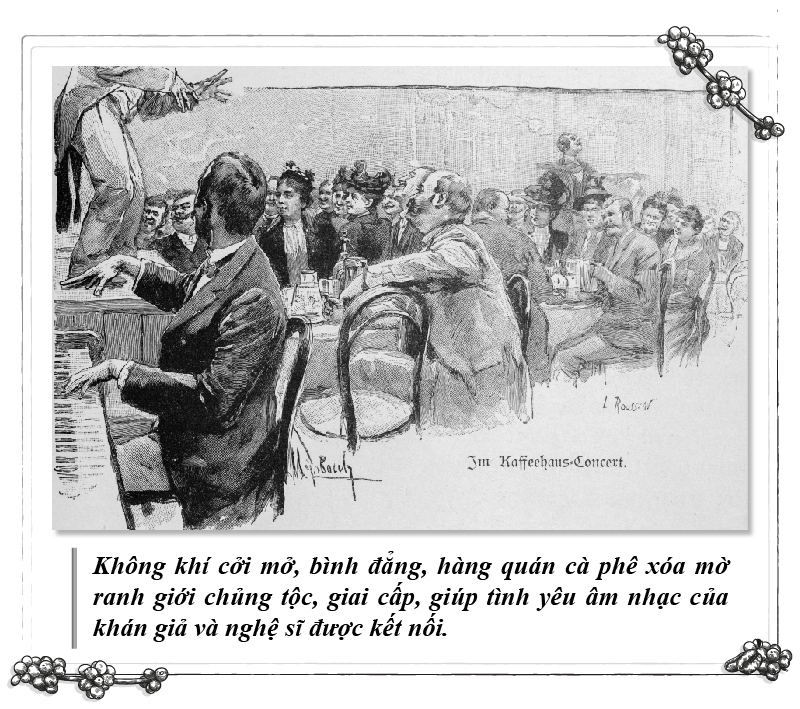
The open and egalitarian atmosphere of the coffee houses blurred the boundaries of race and class, allowing the shared love of music between audiences and artists to connect.
The inspiration and ideas from the coffee houses helped artists create renowned works that defined unique musical styles.
In Vienna, the Café Frauenhuber was a regular meeting place for Wolfgang Amadeus Mozart, Joseph Haydn, and Ludwig van Beethoven to exchange musical ideas. In fact, Mozart once wrote three compositions continuously over three hours while sitting in the café. During his years in Vienna, Mozart composed immortal masterpieces like The Marriage of Figaro, Don Giovanni, and The Magic Flute. The German musical genius Richard Wagner also frequently stayed at Caffè Lavena in Vienna, where he composed parts of his operas Parsifal and Tristan und Isolde. Moreover, Wagner and other renowned opera, violin, and piano artists turned Caffè Lavena into a club for artists, known as the “Caffè dei musicisti” (Coffee House of the Musicians). Meanwhile, the Austrian musician Georg Franz Danzer (1946-2007) found inspiration at Café Hawelka to compose his famous song Jö schau.
For the Polish composer and piano artist Frédéric Chopin, the coffee houses in Warsaw (Poland) were places he frequently visited to drink coffee and discuss the cultural life of the capital city. It was from these coffee house discussions that Chopin drew powerful inspiration from his homeland, and his musical career became deeply intertwined with the purity, distinctiveness, melodic richness, and sonorous qualities of the Polish lowlands.
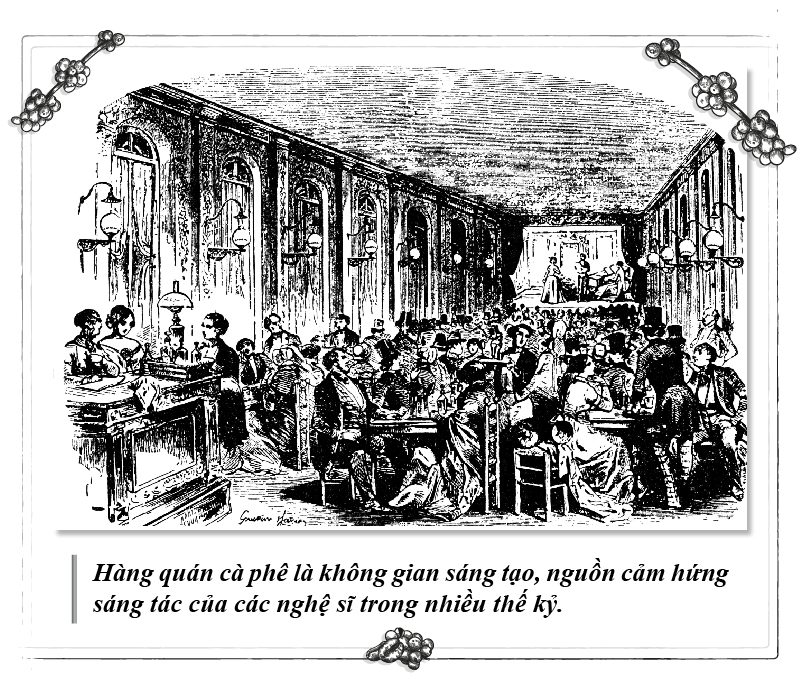
Coffee houses have been a creative space and a source of artistic inspiration for artists across many centuries.
The imprint of coffee and coffee houses in the evolution of music continues to persist and propel the creative process of artists today. It encourages interaction and resonance towards the universal values of Truth, Goodness, and Beauty within the community.
Readers are cordially invited to watch the series of The Tao of Coffee videos posted on https://bit.ly/caphetrietdao
Coming up: Music from the love of coffee

